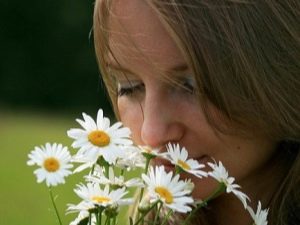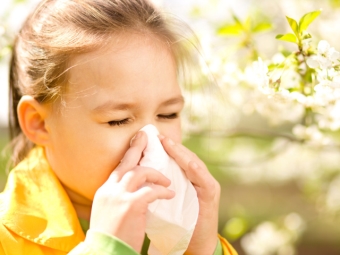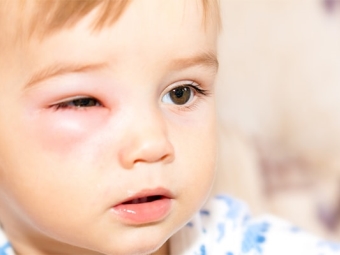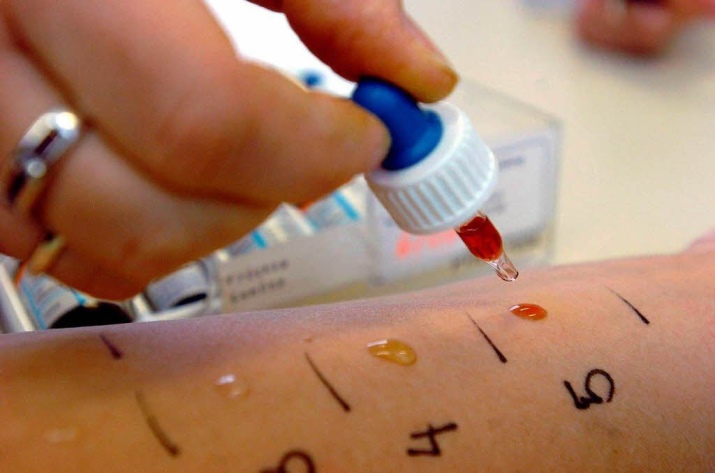Chamomile Allergy

Chamomile treatment is prescribed for a huge variety of different diseases. It is widely used in the treatment of both adults and children.However, chamomile treatment does not always have only positive effects. Some people have allergic reactions when using this plant.
Causes and symptoms
All allergic reactions that occur on chamomile can be divided into two groups. The selection of these forms of the disease is associated with the characteristics of the allergen that enters the body. Getting on the mucous membranes, a foreign and allergenic substance can cause a whole cascade of inflammatory changes that cause the appearance of unpleasant symptoms of allergies.
All allergic reactions can be divided, taking into account the reason that caused them, into the following categories:
- Pollen allergy. The most frequent variant of the development of chamomile allergy is found when the plant aroma is inhaled. In this case, the body reacts violently to the pollen that is present on the flower. Such forms of allergic reactions are found in the vast majority of cases.
- Allergy to decoction or infusion of chamomile. It occurs mainly in babies of the first year of life. May occur in babies during breastfeeding. Nursing mothers who use decoctions of chamomile during lactation can pass biologically active components through milk. In this case, the baby quickly and quite clearly manifest symptoms of allergies. Such a form of allergic reaction is quite rare, however, requires the complete abolition of the use of chamomile during the entire breastfeeding period.
Manifestations of an allergic reaction can be varied. The severity of symptoms will depend on the amount of the allergen entering the body, as well as the initial level of immunity. Often more weakened people may react excessively violently to any intake of the allergenic product.
The most specific allergy symptoms include:
- The appearance of pronounced itching. It usually develops within a few hours after the allergen enters the body. In severe cases, itching is intolerable. In the evening and at night it decreases slightly. After water treatments may increase the itching.
- Redness of the skin. Red itchy spots appear on the skin. They can be of various shapes and sizes. Most often, the surface of such skin elements is hot to the touch. The large localization of such rashes can be in the area of the folds on the body, on the face, and also behind the ears.
- Impaired breathing It develops with severe allergies. In this case, even the most dangerous forms of an allergic reaction can develop: angioedema or anaphylactic shock.
- Deterioration of general well-being. In the midst of an allergic reaction, general weakness increases, pronounced drowsiness appears. It may also decrease appetite and disturb sleep.
- Tearing. Develops most often with pollen allergies. Allergic conjunctivitis is accompanied by severe redness of the eyes, as well as abundant discharge. In some cases, lacrimation can significantly impair vision and lead to the inability to focus the gaze on objects.
What is dangerous?
The development of allergies can be very dangerous. You can never predict in which case there are dangerous complications. Any manifestation of allergy requires immediate treatment.
The risk of asphyxia or respiratory arrest with an allergic reaction is very high. Such a complication can develop very quickly. With severe individual intolerance to chamomile - even less than an hour after ingestion of an allergenic substance. In such cases, mandatory hospitalization is required.
An allergic reaction can occur as Quincke's edema. In this case, there is a pronounced swelling on the face. Eye crevices become narrowed due to pronounced swelling. Visibility and respiratory impairment may be observed.In this form of allergic reaction, it is necessary to immediately take antihistamines and even prednisone.
If specific symptoms of angioedema appear, you should call an ambulance team as soon as possible!
Child allergy
Often an allergic reaction can occur in a baby in two cases:
- when taking a decoction of chamomile inside;
- during the baths.
Both situations require the immediate cessation of the use of a medicinal plant. The skin of babies, especially the first year of life, is very sensitive to any foreign substances with antigenic properties. Even a small amount of ingested antigen can cause a violent manifestation of allergies.
If for some reason the doctor prescribed a decoction or tea from chamomile to the child, remember that after the first dose it is important to assess the condition of the baby.
You must regularly monitor the condition of the skin. It should not appear any red spots or rashes. If you notice that the baby began to comb the skin, be sure to show the child to the pediatrician. It is likely that an allergic reaction to chamomile was manifested in this way.
Diagnosis and treatment
Chamomile allergy can be diagnosed by the presence of symptoms that occur after using the drug. As a rule, they appear quite brightly and do not allow to confuse an allergic reaction with other diseases.
In difficult cases, you can conduct additional laboratory tests. This helps the determination of specific antibodies - immunoglobulins class G. Excess of normal values of these indicators indicates the presence of an allergic reaction in the body. Also using this analysis, you can identify and all cross-allergens, which can also cause the development of allergies.
Various drugs are used to treat an allergic reaction:
- Antihistamines. It happens several generations. The most commonly prescribed are: Suprastin, Claritin, Loratadine, and many others. They help eliminate itching and do an excellent job with skin rashes.
- Hormonal. Can be used in the form of eye drops, nasal sprays or tablets. Appointed only by a doctor. Usually applied for 5-7 days. May cause side effects. They are prescribed for the more severe course of an allergic reaction and for the elimination of life-threatening conditions.
- Symptomatic. These include, for example, antitussives. They are used in the development of wheezing during breathing or disorders of bronchial conduction.
Prevention
In order to prevent the development of an allergic reaction, it is imperative that you stop using decoctions or any medicines that contain components of chamomile. In cases of chamomile pollen allergies, all contact with this plant should be avoided. Usually, doctors recommend thoroughly rinsing the nose and eyes after visiting the street, and also drink a course of antihistamines for the entire flowering period.
Preventing allergies is much easier than curing.
Allergic reactions to chamomile are quite rare, but require very careful attention. With the development of allergies is very important to take antihistamines as quickly as possible. This will help reduce the risk of life-threatening critical conditions.
For details on the occurrence of allergic reactions to chamomile, see the following video.
































